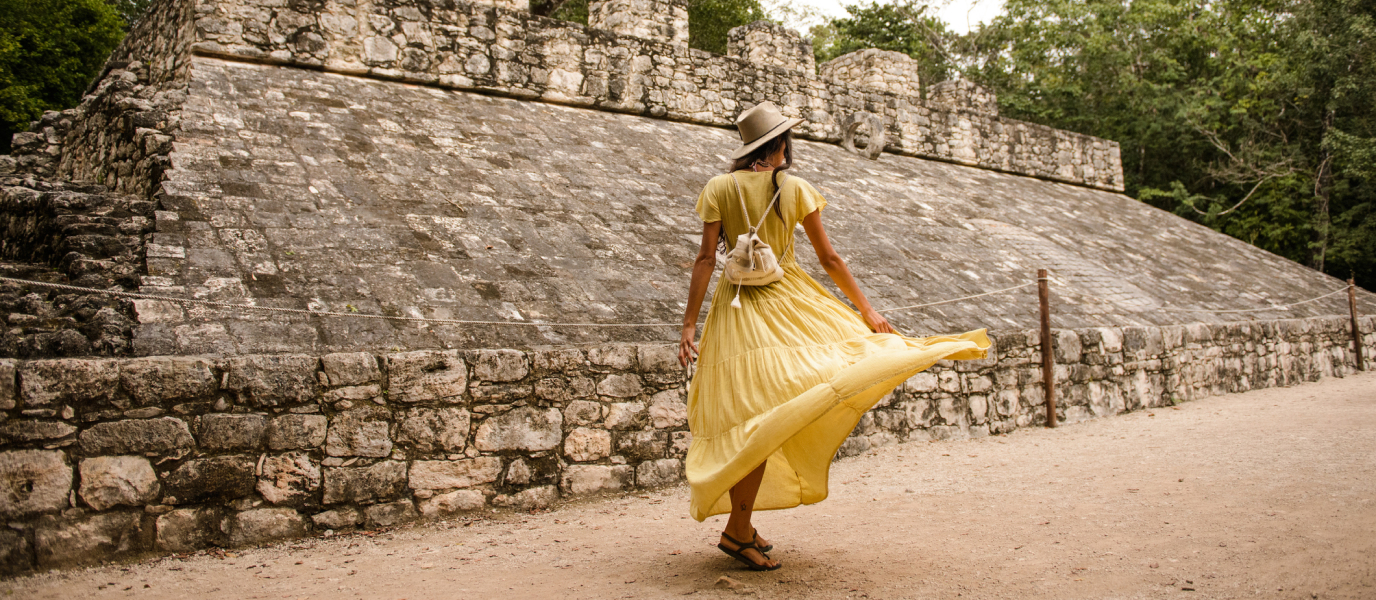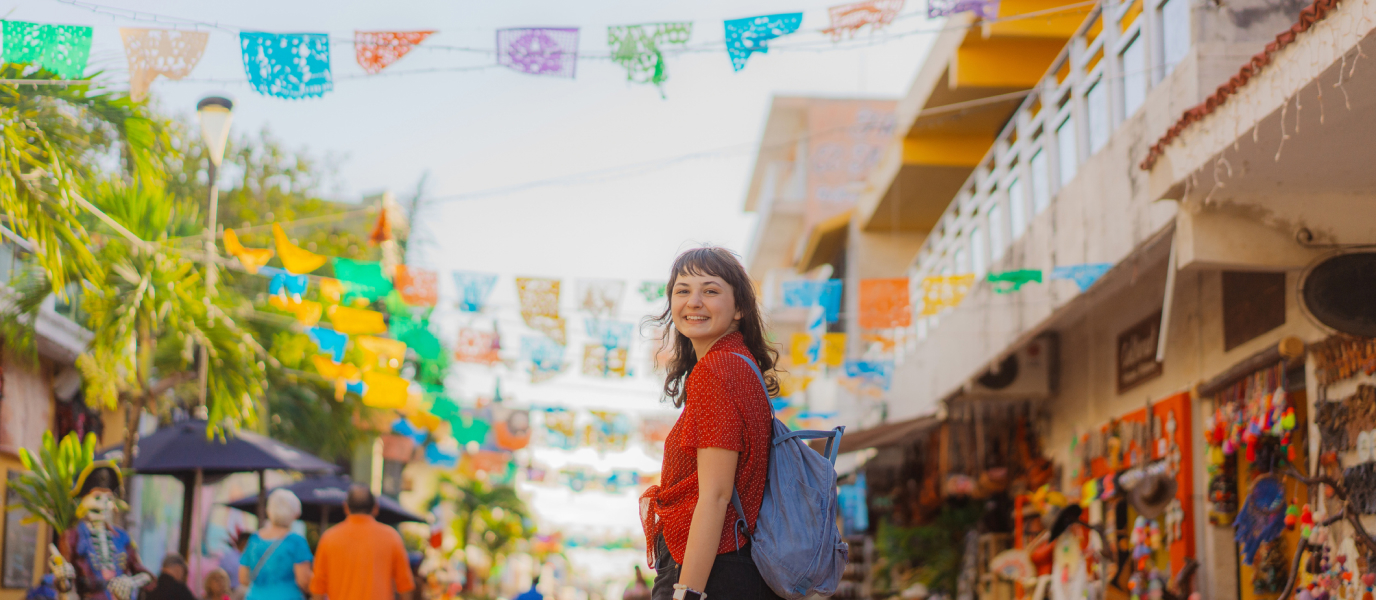The ancient Mayan World is a truly incredible collection of treasures and some of its most impressive jewels are found in the Yucatan Peninsula. Places like Chichen Itza, Uxmal, Tulum, and, of course, Coba, the largest Mayan city in the north of the Peninsula, invite you to discover the breathtaking universe of the original inhabitants of these magical lands of cenotes and ancient legends.
Coba is located to the west of the archaeological zone of Tulum, in the middle of the dense tropical forest of the state of Quintana Roo. Flanked by its five lakes, the city was one of the most important Mayan capitals during the Classic period (between 250 and 900 AD). Today –more than a thousand years later–, this unique archaeological site includes outstanding elements, such as the pyramid of Nohoch Mul, the highest pyramid in the Yucatan Peninsula, and the second in the whole Mayan World. Or like the Temple of the Frescoes, which still preserves significant fragments of exquisite mural painting. In any case, Coba is a place that you have to visit on your next vacation in Riviera Maya.
Coba: an old crossroads
With an area of more than 20 square miles and about 50,000 inhabitants in its moment of maximum splendor (end of the first millennium AD), Coba was not only one of the great capitals of the Mayan World. This ancient city with more than fifteen centuries of history was also a fundamental crossroads for the development of Maya Civilization itself.
And Coba was literally a crossroads, because up to 45 sacbés –the famous white and elevated roads, paved with limestone and stucco, that the Mayans built to communicate their main cities– converged there. The longest one, sacbé 1, runs about 60 miles west to the old city of Yaxuna. The shorter sacbés, only a couple of miles long, link the different areas that comprise this extensive archaeological site.
The first settlement of Coba is remarkably early, spanning between 100 BC and 300 AD, but the city really began to flourish in the middle of the first millennium AD, reaching its constructive peak between 800 and 1000 AD. Its impressive collection of pre-Hispanic structures is currently organized into 4 large areas: the Coba Group, the Macanxoc Group, the D Group or Group of the Paintings, and the Nohoch Mul Group. In each of them, you will find authentic archaeological jewels, from great pyramids and temples to detailed stelae and frescoes that tell us the story of the magnificent Maya Civilization.
Upon the arrival of the Spanish conquistadors, around the year 1550, the great Mayan city of Coba was already abandoned.
Coba ruins: what you cannot miss
Coba is a great puzzle made up of all kinds of structures to which different stelae and other architectural and decorative elements are added. A great pre-Hispanic city, full of surprises, which must be discovered thoroughly, but, of course, there are a handful of archaeological treasures that you cannot miss.
1. The Pyramid of Nohoch Mul
At 138 feet high, this is the tallest pyramid in the Yucatan Peninsula and the second in the whole Mayan World. Its seven bodies are built on a natural promontory –nohoch mul means “great mound” in the Mayan language– and crowned by a small temple. Its long main staircase, of about 120 steps, connects the lower plaza with the top of the building. From up there, you can see an impressive panoramic view of the jungle that surrounds the entire archaeological site. Nohoch Mul is the only structure in the archaeological zone that can be climbed.
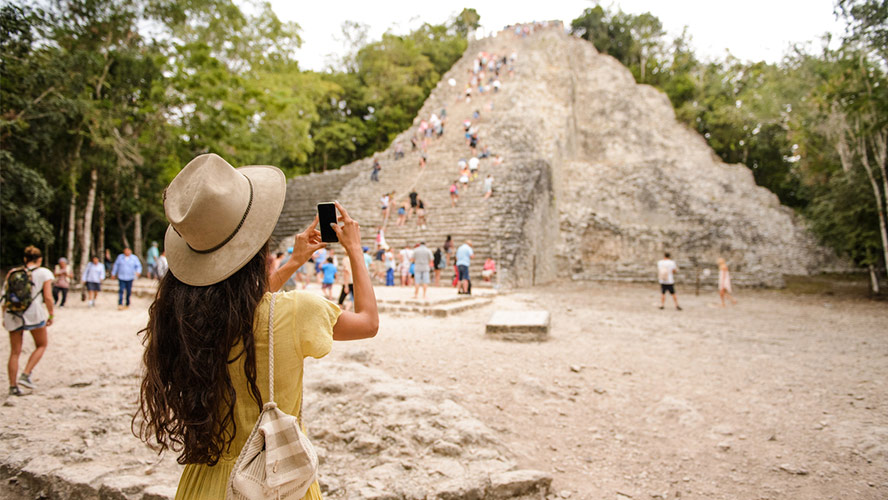
2. The Ball Games
In Coba, there are two ball game courts. One of them is in the Coba Group and shows figures of prisoners, representations of human skulls, and some hieroglyphic inscriptions. The other one, in Group D, is similar to the latter, but its game rings show the symbol of Venus, a depiction related to war, sacrifice, and death. Both are good examples of what this important sacred game represented for the ancient Mayans.
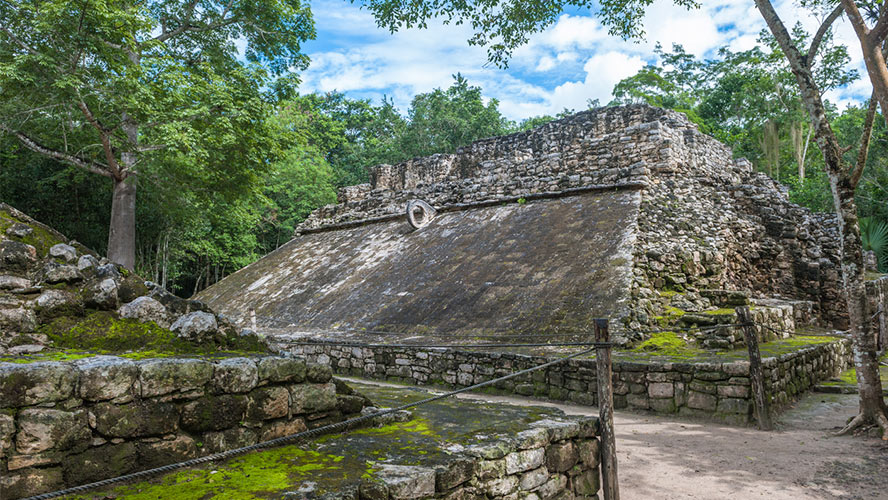
3. Xaibé or The Observatory
The Xaibé is one of the most extraordinary buildings in Coba. Commonly known as The Observatory (although there is no clear evidence of such function), this oval-shaped temple (something quite unusual in Mayan architecture) is formed by five levels and has a large central staircase. Considered to be some sort of monument dedicated to the four seasons and the Mayan calendar, this is also the converging place of sacbés 1, 5, 6, and 8. In fact, Xaibé literally means “crossroads”.
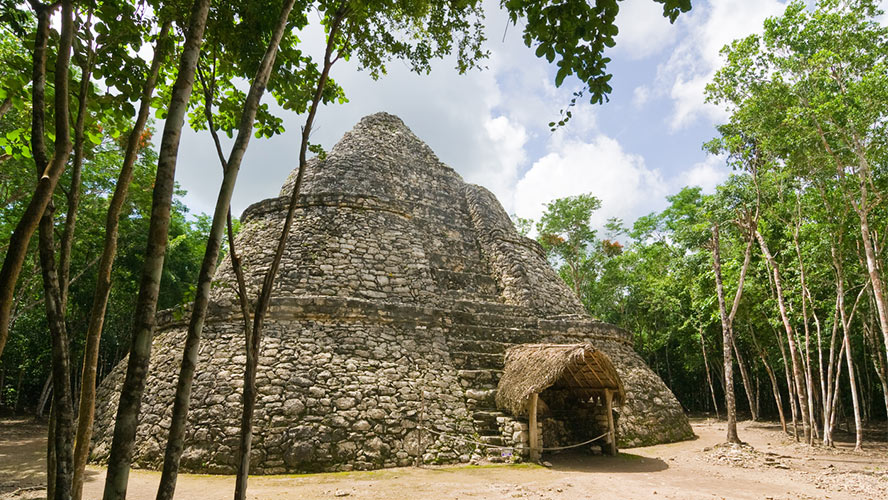
4. The Church
With a height of 79 feet, this building is the second tallest structure in Coba. Made in different construction stages, inside the temple there was a rich offering composed of ceramic pots, beads, a jade figurine, plates of engraved snail, pearls, and shell pectorals. Other palatial and residential buildings accompany this great temple.
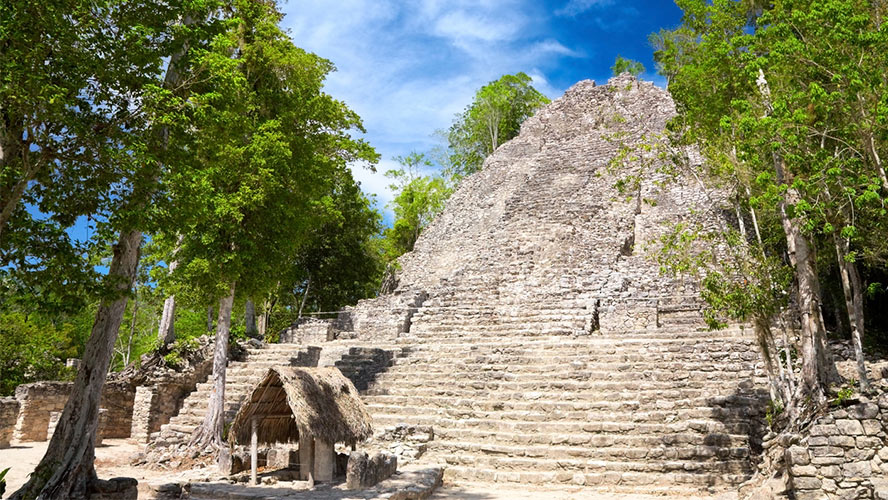
5. Group of the Paintings
This sector of Group D is headed by the Temple of the Frescoes. The building was richly decorated, inside and out, with different pictorial elements. Currently, only the frieze is well preserved, showing interesting scenes of agricultural rites. Five additional structures, 13 altars, stelae, and other ceremonial buildings end up composing this important Group within the archaeological site of Coba.
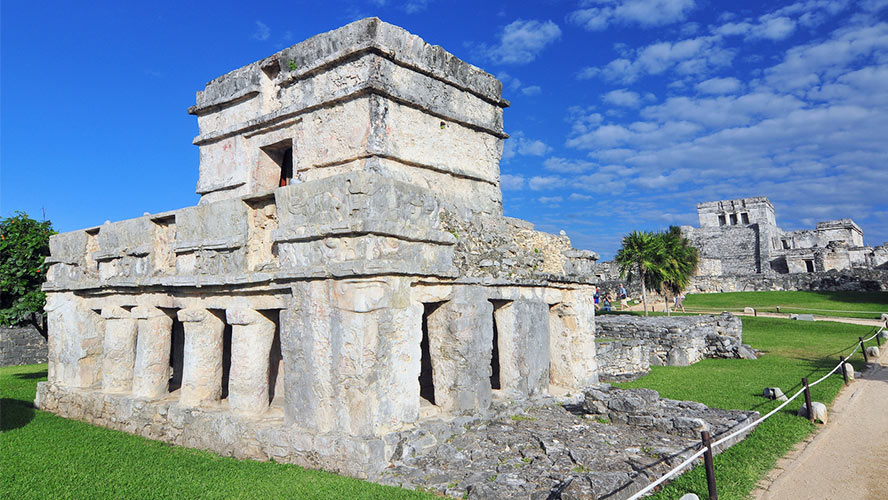
Tips for visiting Coba
Only about 5% of the temples, pyramids, and palaces that formed the ancient city of Coba have been rescued by the archeologists –the remaining 95% are still covered by the dense jungle. Nevertheless, the different building groups are relatively far from each other. Luckily, within the archaeological site itself, you can rent a bike to go from one place to another.
Pedaling in the middle of the jungle is something that you simply cannot miss. In addition, it is a great way to squeeze the time you have to discover this vast archaeological site. Do not forget that you are right in the middle of the jungle and humidity and heat can play a bad trick on you, so along with all the pedaling, keep yourself well hydrated.
And if you can’t hit the pedals, but still want to avoid the walking tour (which is also a nice experience), don’t worry, there is also the option of hiring a Tricitaxi (driver included!). Now you can relax and enjoy the magnificent views of this jewel of the Mayan World.
Hiring an official guide is also a great way to get to know Coba in depth. After all, they really know the history of the place. And all those secrets about this ancient Mayan city that do not appear in the books as well!
Coba: 5 lakes… and several cenotes!
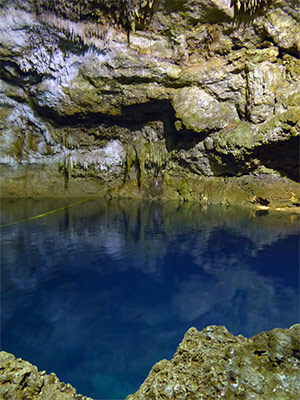
Around the archaeological site, you can not only find five lakes but also several cenotes (about a 10-15 minute drive). Beautiful sinkholes where you can enjoy a refreshing dip after visiting Coba.
-
Choo-Ha
A long wooden staircase will take you inside this incredible flooded cave. Choo-Ha is a young, wide, shallow cenote, surrounded by stalagmites and stalactites. An absolutely wonderful place and an ideal spot for children.
-
Tamcach-Ha
Covered by its great vault, this impressive underground cenote is found about 55 feet below the jungle surface. Its crystal clear waters and significant depth (about 115 feet) are perfect for snorkeling. In addition, it has two platforms from which you can take a few good dives.
-
Multun-Ha
Considered the most beautiful cenote in the area, it is also a subterrene cave, located about 60 feet underground. Its large stone vault, as well as its rocky funds, offer an authentic natural spectacle.
-
Cenotes of San Juan de Dios
A little further than the other three, but also near Coba –on the outskirts of the town of San Juan de Dios–, these two cenotes are also a true marvel. They are known as Muul’ich Ts’on’ot and Xamán cave; the first one has a massive vault, and the second cenote has the shape of a grotto. You are going to love them both!































































